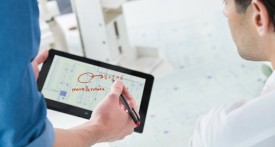Healthcare providers are investing more in technology to boost the productivity of their workforce and improve the quality of their care.
The Australian healthcare industry is facing mounting challenges – ranging from an ageing population to increasing budgetary pressures – to provide an improved but cheaper service. In response to these challenges, healthcare providers are increasing investment in mobile technology, which allows health professionals to work in a more timely manner and on the go.
Benefits for the health facility
One of the biggest benefits for hospitals and doctor’s offices using mobile technology is they can shorten their time to deliver patient care, which increases efficiency and reduces costs. Further, it can decrease human errors, such as forgetfulness, poor motivation and fatigue, which can cause some of the major medical problems in health facilities. For example, according to a report from Human Factors and Ergonomics Society of Australia, some 52.9 per cent of prime causes of healthcare-related fatalities were due to staff action or communication factors.
To improve this situation, doctors can use mobile technology to provide point-of-care decision support, giving them access to medical reference information and reducing transcription errors down the line. This means healthcare facilities are more likely to administer patients the correct medication. For example, certain prescription drugs can conflict with others and cause medical complications in patients. Mobile technology can keep track of a patient’s medical history, preventing improper prescriptions and giving patients the best chance to recover.
Benefits for the workforce
Mobile technology can improve employees’ productivity. In healthcare, this means staff can hasten their response time, freeing them from their desktop computer or a fixed-line phone and giving them more time with their patient, translating to better medical outcomes. For example, mobile technology allows nurses to scan barcodes on devices and upload the relevant medical information into a central data store, where previously they would spend too much time manually recording information into a book.
Another example of mobile technology increasing efficiency in a hospital is patient check-in kiosks, which can increase data accuracy and reduce human errors. These systems deliver a scannable barcode to the patient ahead of their appointment, which they register when they arrive at the healthcare facility.
However, effective healthcare mobile technology needs the infrastructure to back it up. Hospitals and doctor’s offices should upgrade their wireless networks so that they connect more securely and quickly to servers, otherwise employees will lose productivity trying to troubleshoot problems instead of treating patients.
The desktop and fixed-line phone will still play a major role in healthcare administration and communication. However, with the proper infrastructure, mobile technology can increase the effectiveness of treatment and employee productivity for years to come.














